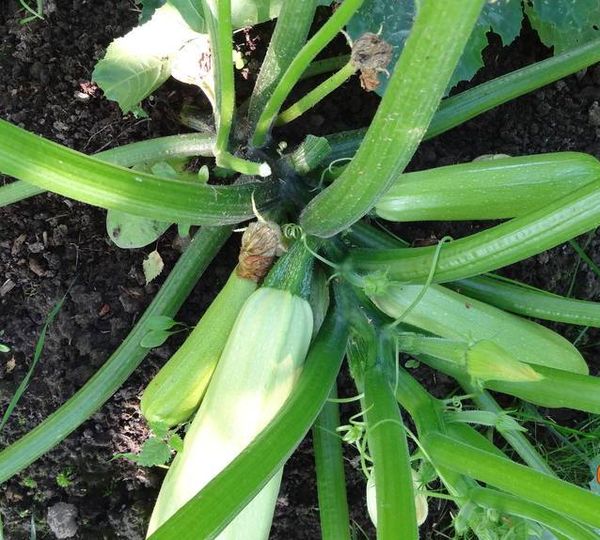Kavili Zucchini is a welcome guest at each table, as it contains a large amount of vitamins and trace elements that our body needs, especially in the winter. Also zucchini is very useful in diseases of the liver, kidneys and heart.
Table of contents
Description and characteristics of the variety Kavili
Cavili is a hybrid of Dutch origin. The variety is early ripe and high-yielding. The ripening period from germination to technical maturity is from 40 to 50 days.
The plant forms a bush with smooth, cylindrical fruits, green in color, reaching a length of 20 cm.
The Cavili variety has tender, juicy and white flesh. Ripe fruit according to the description reaches in weight up to 300 grams.
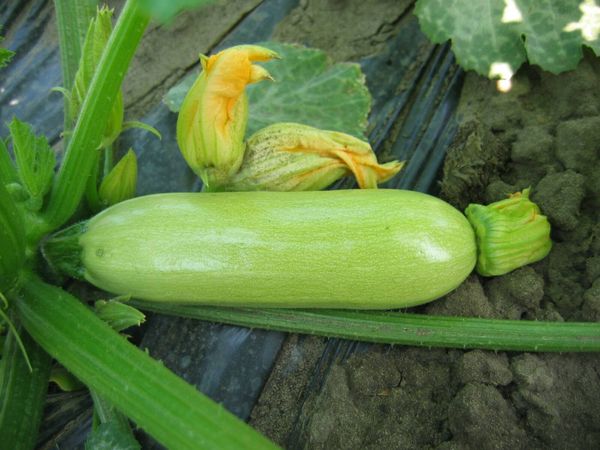
Advantages and disadvantages
The advantages include:
- Precocity
- High yielding
- Self-pollinated variety
- Fruiting lasts several months.
- Variety resistant to various diseases
- Plant no need for constant care
- It has excellent taste and is ideal for preservation.
Significant deficiencies have been identified.
Technology and seed preparation for planting
To grow a healthy bush in two ways:
- By seedling method.
- Seeds, directly to open ground.
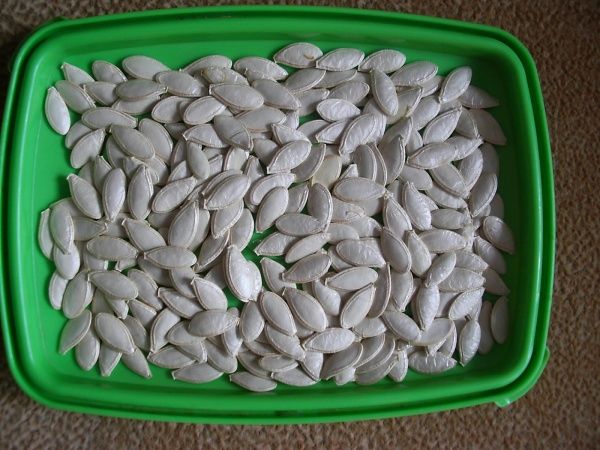
Before planting, Kavili seeds should not be processed, but to reduce the germination time, they should be soaked in warm water for five hours, then 24 hours in a damp cloth. Seed material should swell a little, but not germinate.
The best time to grow seedlings is the last days of April, the beginning of May. Seeds for seedlings are sown in separate containers with a diameter of more than 10 cm. The plant does not need a pickling.
The first dressing is carried out with complex fertilizers 7 days after planting the seeds, a week later the feeding procedure is repeated.
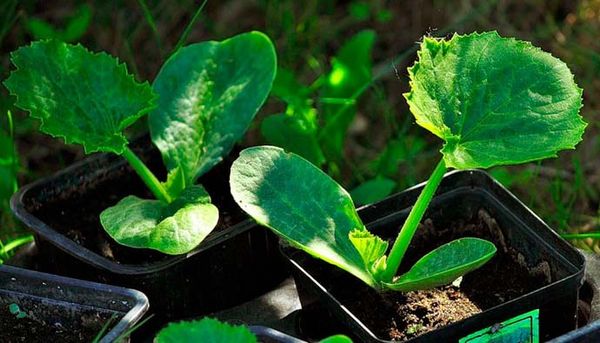
Seedlings are planted in a permanent place in the age 30 days and buried in the ground before the first cotyledon leaves. To protect against drafts, young seedlings must be covered for a week.
Seeds are sown in open ground to a depth 4-5 cmonly after the earth warms to 15-18 degrees. With a decrease in temperature, seed germination is suspended, therefore, the planted seeds must be covered with a covering material.
Although the Cavili variety is resistant to diseases, it is not recommended to plant it after cucumbers, pumpkins and squash, as they are prone to the same diseases. Planted squash according to the scheme 70x140.
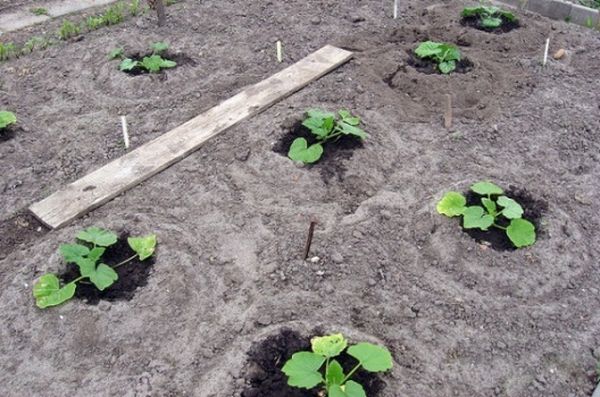
Soil preparation
Squash Cavili must be planted in light, fertile soilprepared with autumn.
Soil with high acidity for this variety is not suitable. To normalize acidity, it is necessary to add to the soil dolomite flour or ground chalk.
During the autumn preparation of the beds, the soil is dug up by the shovels to the depth of the bayonet and organic fertilizers (manure, compost) are applied. When applying fertilizer in the fall, in spring the soil will not need feeding.
In the spring, they dig up the earth and form the beds. On the lowered section, the beds are raised 20-30 cm from the ground, and 100 cm wide with a slope on the south side, so that the soil warms up better.
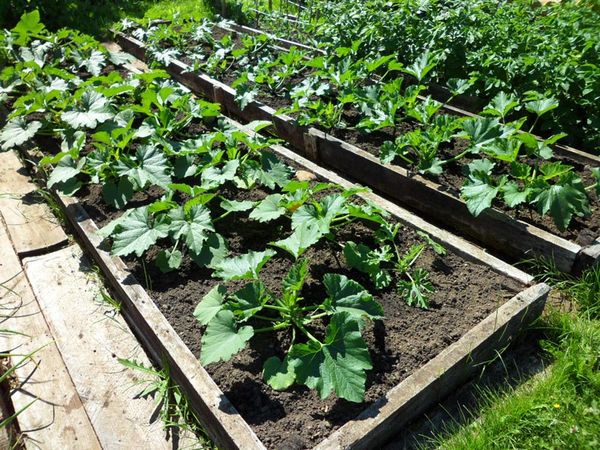
To determine the readiness of the soil for planting, you can clenching it in a fist and dropping it to the ground. If a lump crumbles, it means that the soil is ready for growing seeds and planting seedlings.
Care
Although the grade and unpretentious care, anyway, some rules must be observed:
- Provide open sunny place - with a lack of light, the yield drops.
- In time to remove large leaves,as the plant may lack sunlight due to self-dimming.
- Zucchini love heat and when the air temperature drops, young seedlings need to be covered.
- Watering to produce extremely warm water, avoiding drying out of the soil. Watering is done around the stem at the rate of 10 liters per square. meter.
- Fertilizing is carried out with complex fertilizers, three times per season - at the time of growth, during flowering and during the formation of fruits.
.
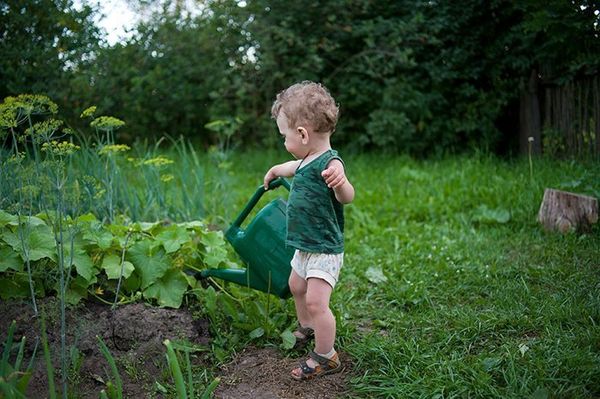
Disease and Prevention
Dutch Kavili F1 squash is not susceptible to disease, but prevention will only help it.
- To protect against spider mite The bush is sprayed with onion extract (a glass of onion peel is poured with 10 liters of water, an old spoon of crushed red pepper and a piece of rubbed soap are added).
- Upon detection aphids, use drugs "Phosbecid", "Iskra", "Confidor".
- From defeat anthracnose - plants are sprayed with Bordeaux mixture or gray colloid.
- In the fight against powdery mildew suitable pollination bush ground sulfur.
Disease prevention also consists in the annual alternation of planting crops on the site, as well as the timely harvesting of diseased plants.
Collection and storage
The first fruits are removed after expiration 1.5 months after landing and, although the Kavili variety does not lose its taste when it grows, you should not wait for its ripening, as overripe vegetables stop the growth and development of the bush.
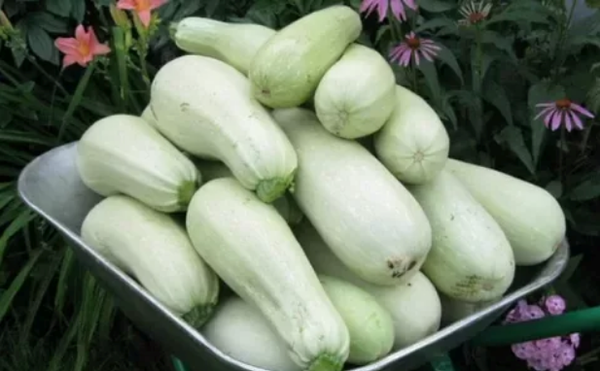
Squashes for quick consumption should be cut at the very base, and for long-term - along with a long stalk.
Milk squash is stored no more than 14 days at temperatures up to + 2 degrees. After a two-week period, the fruits begin to lose their taste, become coarse and rot. For long-term storage, it is necessary to cut ripened zucchini.
Store them in boxes filled with dry straw, so that the fruits do not come into contact with each other. In city apartments, zucchini is stored in a dark and dry place.
Cavili variety appeared in our country not so long ago, but managed to catch the fancy of many gardeners - amateurs.If you follow the simple rules of care, the soft-green vegetable will please with its taste, fresh - in summer, and in preservation - in winter.
